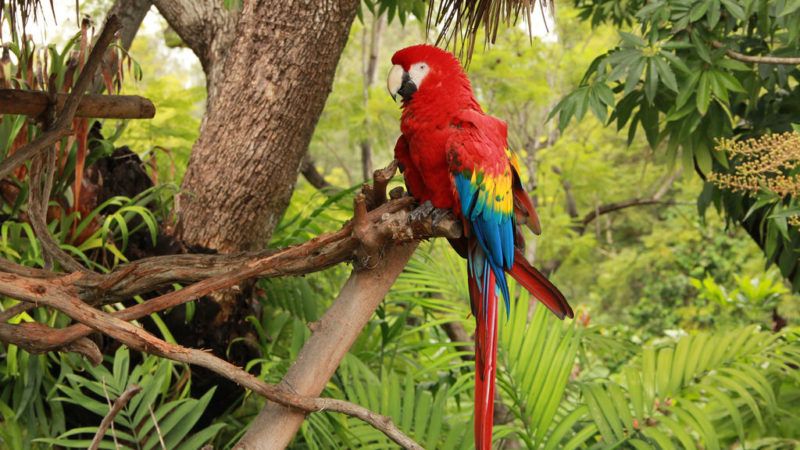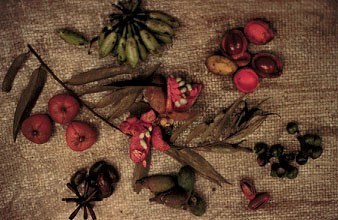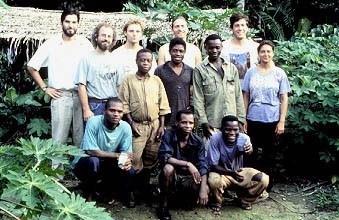Evolution and conservation of Central African biodiversity: priorities for future research and education in the Congo Basin and Gulf of Guinea
Published Work | 2014 | Biotropica 47(1), 6–17
permalink
Research Project | 2016
Region:
South America (Ecuador)
Africa (Cameroon)
These long-term studies examine the role of birds and primates as seed dispersers in the maintenance of tree diversity in West African and Neotropical rainforests. In West Africa, we are using data gathered at a remote field station (maintained by CTR and ECOFAC) in the Dja Reserve, (a UN designated Biosphere Reserve and West Africa’ s largest). CTR members have learned that just two species of Hornbills disperse the seeds of over 25% of the more than 300 tree species found in the reserve. Given the alarming population declines of other seed dispersers, particularly primates and elephant, this work is of enormous importance to conservation planning.
In Ecuador, we are studying the Long-wattled Umbrellabird (Cephalopterus penduliger) northwestern Chocó rainforests and Scarlet Macaws (Ara macao) in the Amazon basin. Both species are key dispersers of seeds within their home ranges, yet the role each plays in regeneration of degraded habitat and maintenance of primary forests are poorly known. These projects employ radio telemetry and detailed phenological data to quantify the basic biology of these little-known yet charismatic and ecologically vital species. Additionally, rainforest restoration projects using an experimental approach to restoration are currently being developed in Ecuador in conjunction with local and international NGOs. CTR is also developing proposals to expand this work to include comparative research in Equatorial Guinea, Democratic Republic of Congo, Central African Republic, and Gabon.


Related Publications
Published Work | 2014 | Biotropica 47(1), 6–17
permalinkPublished Work | 2014 | Biotropica 46(6), 763–770
permalinkPublished Work | 2014 | Journal of Tropical Ecology 30(4), 273–290
permalinkPublished Work | 2014 | Oecologia 125, 249–257
permalinkPublished Work | 2013 | Biological Conservation 166, 203–211
permalinkPublished Work | 2012 | Biotropica 44(5), 689–698
permalinkPublished Work | 2011 | Evolutionary Applications 4(2), 397–413
permalinkPublished Work | 2010 | Molecular Ecology 19(8), 1745–1753
permalinkPublished Work | 2009 | Ostrich 2004, 75(3), 79–88
permalinkPublished Work | 2007 | Biotropica 39(3), 340–347
permalinkPublished Work | 2005 | Ecology 86(10), 2684–2694
permalinkPublished Work | 2005 | Biotropic 37(1), 95–100
permalinkPublished Work | 2004 | Oecologia 139(1), 66–75
permalinkPublished Work | 2003 | Plant Ecology 164(1), 49–64
permalinkPublished Work | 2002 | Ecography 25(6), 745–749
permalinkPublished Work | 2002 | Trends in Ecology and Evolution 17(8), 379–386
permalinkPublished Work | 2002 | Ecology 83(1), 228–240
permalinkPublished Work | 2001 | Biotropica 33(4), 606–620
permalinkPublished Work | 2001 | Journal of Tropical Ecology 17(6), 787–808
permalinkPublished Work | 1998 | Journal of Tropical Ecology 14(3), 351–371
permalinkPublished Work | 1998 | American Conservation 1(2), 107–117
permalink